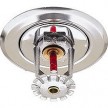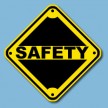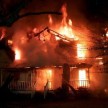Lightning Protection For Your Home
The Damage From Lightning Is REAL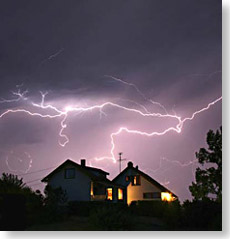
The chance of incurring a loss due to lightning may be greater than many think. Statistics compiled by the Insurance Information Institute (III) indicate that five percent of all insurance claims are lightning related, accounting for damages totaling more than $1 billion annually.
The National Oceanic and Atmospheric Association (NOAA) cites lightning as responsible for more property damage nationally than tornadoes and hurricanes combined.
In spite of these dramatic statistics demonstrating the significant safety and economic concerns associated with lightning, there is good news. Because, unlike hurricanes and tornadoes, lightning is a force of nature for which affordable and reliable protection is readily available.
Structures today are more vulnerable to lightning damage than ever before. Changes in architectural design trends, increased use of conductive building components like copper flashing, metal roof systems and framing and the integration of sensitive electronic components into critical building systems have greatly increased the safety and economic risks that a lightning strike poses.
Lightning Protection System:
A properly installed lightning protection system performs a simple, yet invaluable task. The system provides a specified path on which lightning can travel. When a structure is equipped with a lightning protection system, the destructive power of the lightning strike is directed safely into the ground, leaving the structure, personnel and building systems unharmed.
While the concept behind lightning protection is relatively simple, the requirements for proper installation are specific and often complex. The single best was to ensure proper system design and installation is to specify compliance with the nationally recognized standards for lightning protection maintained by National Fire Protection Association (NFPA780), Underwriters Laboratories (UL96A) and Lightning Protection Institute (LPI175). Strict compliance with these requirements is essential to proper system performance.
As is true with any safety system, ensuring correct installation the first time is a must, since waiting for nature to send down a bolt of lightning to test the system can have catastrophic results.
Essential Lightening Protection Components
A lightning protection system that complies with national standards must include all of the following elements:
- A network of rooftop air terminals
- A network of ground terminations
- A network of conductors interconnecting the air terminals and grounds
- Interconnection with metallic bodies
- Surge suppression devices on all incoming power and communication lines
The first three elements serve to intercept, conduct and dissipate the main lightning discharge.
The fourth element addresses the secondary effects of a lightning strike by limiting the dangers of lightning side-flashing or arcing within the structure.
The last element protects power lines and connected equipment from lightning current traveling on utility lines. Each of these elements is essential to proper system performance. Failure to make proper provisions for any of these five elements can result in inadequate protection.
Hire A Professional Lightning Protection Company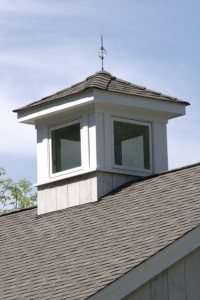
It should be recognized that electrical system fittings and lightning protection system components are not inter-changeable. Material requirements established by UL and NFPA take into account the extremely large currents that a lightning protection system is expected to carry.
To be certain that lightning protection systems are designed and installed in compliance with national safety standards, it is important to enlist the services of a contractor that specializes in lightning protection. Lightning protection is a specialty discipline that is typically not within the scope of expertise held by electrical contractors, general contractors or roofers.
Experienced lightning protection installers are familiar with the provisions of lightning protection standards and are skilled at designing systems that are aesthetically pleasing, safe and effective.



